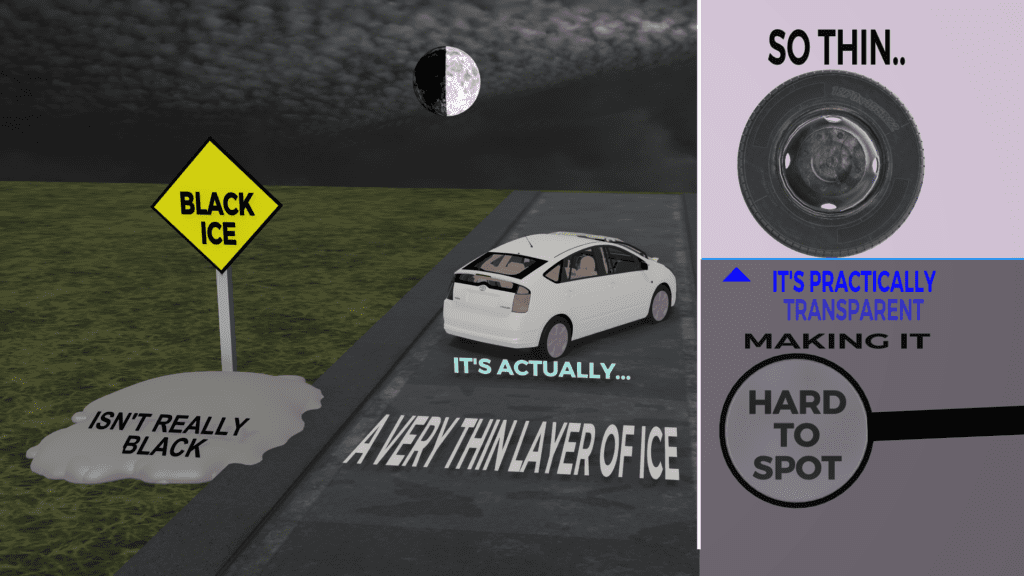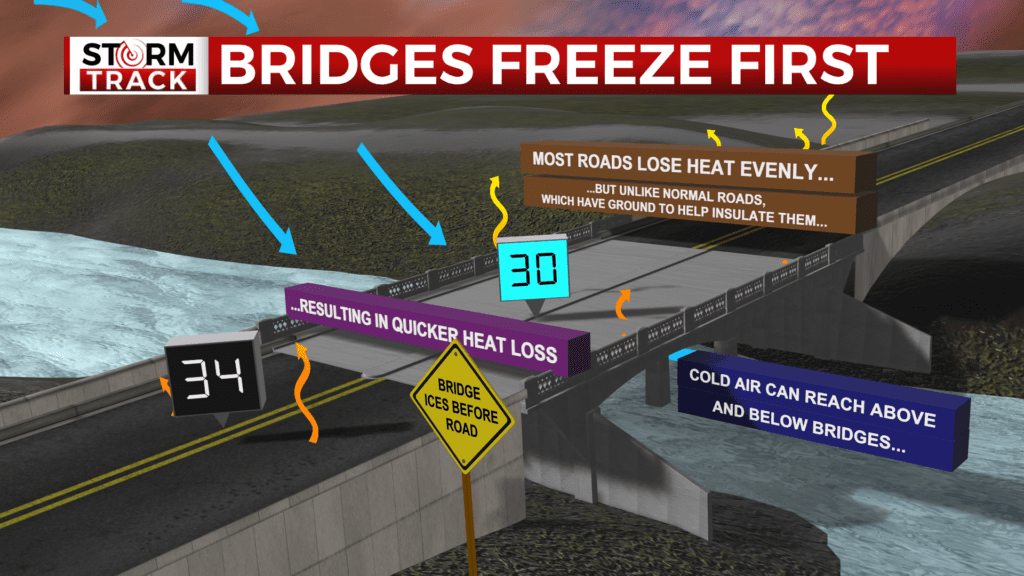Black Ice & Bridges: Know your road conditions
When thinking of wintry driving, you might imagine of a fresh blanket of snow making roads tough to navigate. Drivers must be mindful of a sneaky threat that isn’t as easy to spot as several inches of snow; black ice.
The tricky thing is “black ice” isn’t really black. It’s a layer of ice so thin that it’s practically transparent, and all we see is the “black” pavement, which is where the name comes from. Since black ice often goes unseen to drivers, it’s important to be on the lookout for the conditions that allow black ice to form
RELATED: Check on current road conditions in your area.
Black ice can form from freezing drizzle or rain, or it can be caused by wet surfaces turning icy during the freeze and thaw cycle. Black ice typically forms at night or in the early morning. Be wary of parts of the road that don’t get sunshine, such as a tunnel or areas cast under a shadow by the tree line.

If you find yourself driving into black ice, it’s best to keep the steering wheel straight. Do not break abruptly, because that can lead to a spinout. Instead, take your foot off the gas and allow the car to coast to slow down. Black ice tends to be patchy, so you shouldn’t have to travel far before you drive into an area with traction and you can start pumping the breaks.

It’s also important to remember that bridges freeze first.
Most roads lose heat evenly, but unlike normal roads which have ground to help insulate them, cold air can reach above and below bridges, resulting in quicker heat loss. Because of this, you can drive onto an icy bridge even if the temp is above freezing.
If temperatures are near freezing, slow down as you approach a bridge or overpass and keep greater distance between you and other vehicles to avoid a spinout.
When approaching an icy bridge, take your foot off the gas to slow down. Moving at a higher speed means you are more likely to hit a patch of ice and lose control. Avoid braking, changing lanes, and accelerating. It is best to keep at a consistant, slow speed while on an icy bridge because any sudden moves can make your vehicle slip or spin.
Other tips for driving during slippery conditions:
- Increase your following distance behind other vehicles. This will provide a greater stopping distance if you have to stop suddenly.
- If visibility is low, allow extra distance between vehicles should the car infront go off the road or stop suddenly.
- Know your brakes. AAA recommends keeping the heel of your foot on the floor and use the ball of your foot to apply firm, steady pressure on the brake pedal, whether you have antilock brakes or not. AAA provides more tips here.
These tips can help you stay safe on the roads, and the Storm Track Weather team will let you know when you could be driving into wintry conditions.
Click for the latest forecast, or click here to go back to the Winter Weather Guide. Interested is watching more informational videos, check out Brandon’s Weatherz School.